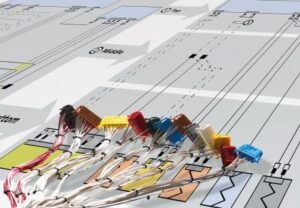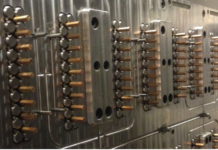
Compared to the ones made back in the 1920s, the wiring harnesses that are being manufactured today are more complex and multifunctional to keep up with fast-paced innovation. Nowadays, a wiring harness diagram has countless parts and components such as connectors, transistors, solenoids, and resistors. These complex designs are built for more modern types of technology and are manufactured for a more organized and structured wiring solution.
When you crack open any kind of electronic device, you will find a wiring harness. It may appear to simply look like a bunch of wires but there is ingenuity and creativity with the way a harness is assembled. Each wiring harness diagram is designed specifically for the equipment or machinery it will be placed in. Its main function is to transmit and distribute electrical signals to different parts of the system that makes a device.
The Durability of Wiring Harnesses
Designing a wiring harness diagram is essential for the longevity of any device. Assembling the wires properly instead of having them run individually keeps them protected and reinforced. It’s also efficient when it comes to repairs and maintenance. Replacing only the part of the harness where the problem is diagnosed saves time and energy. With proper care and preservation, a wiring harness can keep up or even surpass the life of the device, machine, or vehicle it was placed in.
The materials that make up a wiring harness depend on many factors. The wire insulation, for example, is one of the most important parts of a harness. It’s the coating or tubing that wraps around the wires in which the electrical current flows. The material used in wiring insulations varies depending on the device or machine.
In the automotive industry, for example, the insulation that is utilized should be made to withstand high temperatures, vibrations, and abrasions. This is understandably the reason why the insulation material should be built to last.
Damaged insulation may cause damages and short circuits to the system as a whole. Plenty of insulations today are available options during the manufacturing process. Here are common insulation materials with each of their unique properties.
Silicone- Wire harnesses utilizing silicone insulators are also used in high-voltage applications. It is the preferred material for high-temperature environments. They are also known for their fire resistance and ability to withstand wear and tear. However, the disadvantage is that they usually cost more than other materials, but due to their quality and durability, the replacement and repair of silicone wires are minimized.
Polyvinyl Chloride or PVC- Known as the most common materials used to insulate wires, PVC insulators are famous for their durability and versatility. They are also resistant to heat, cold, and water. Appliance manufacturers typically design wiring harness diagrams that utilize PVC insulation. In addition, it is highly customizable and is available in different shapes and sizes depending on the design.
Polyurethane- Insulation made of polyurethane is highly resistant to oils and oxidation. However, polyurethane is used more efficiently at low temperatures. In addition, it is very durable and is commonly used in the aerospace and military sectors. Generally, however, polyurethane is often used as the coating to protect major insulators themselves.


















